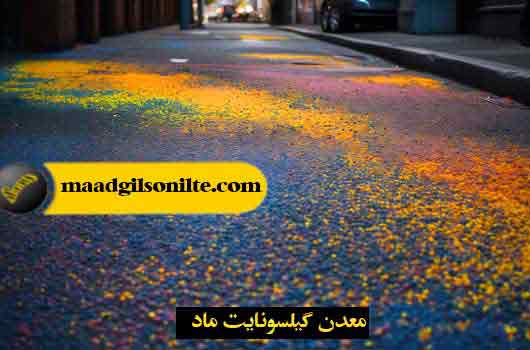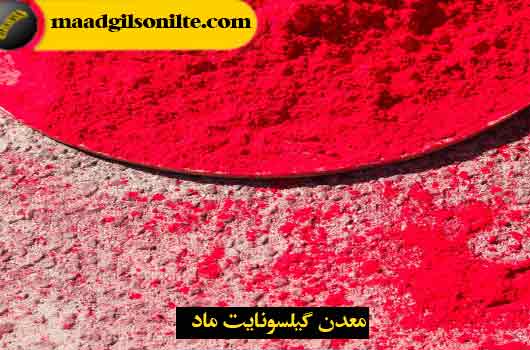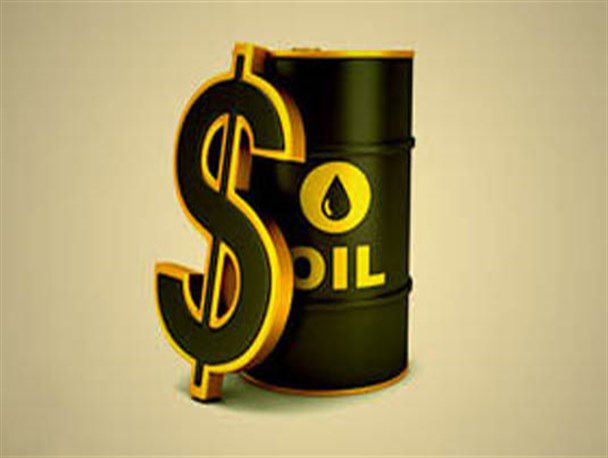
Colored asphalt or colored asphalt is a type of road surface covering in which colored materials are used to create different colors in the asphalt. This modern technology is used in the field of road construction and maintenance.
This article examines the concept of colored asphalt, its benefits, manufacturing process, factors to consider, maintenance needs, and common misconceptions surrounding this innovative paving material. In addition, it highlights the environmental considerations associated with colored asphalt and provides insights into future trends and developments in the field.
This type of asphalt is a new technology in the field of road construction and maintenance, which provides the ability to create various colors in the asphalt coating by using different colored materials. The colors used in colored asphalt usually consist of the family of organic and organic-mineral pigments and can be used from matte colors to bright and reflective colors in liquid or powder form.
In ancient civilizations, various natural materials were used to create colored pavements, including crushed precious stones and shells. However, it was not until the 1960s that modern techniques were developed to produce pigmented asphalt mixtures using artificial pigments.
Colored asphalt mix is usually prepared by asphalt companies or production units. Its production process includes the following steps:
In the production of colorful asphalt mixture, raw materials with specific standards for asphalt are used. These raw materials include aggregate granules, binders (such as petroleum bitumen) and gilsonite or natural bitumen or other fillers. Also, to produce this product, suitable colored materials in the form of powder or liquid are used to create the desired color.
 mixing
mixingThe raw materials are identified in the order that they include natural bitumen or natural gilsonite or petroleum bitumen and powder paint or liquid paint and sand or gravel and are mixed in specific proportions. Mixing may be done manually or using asphalt mixing machines (eg, ready-mixed asphalt). in this
process, the raw materials are mixed and combined to obtain a uniform mixture suitable for use in pigmented asphalt.
After mixing the raw materials, coloring materials are added to the mixture. These colorants are usually available in powder or liquid form and are added to the mixture depending on the need and desired color. Note that colored materials must be combined with other materials to create the desired and uniform color for pigmented asphalt.
After adding colored materials, the final mixture consists of a mixture of Gilsonite or natural bitumen and refinery bitumen with sand and gravel and color, which must be completely mixed and uniform. This step may be done using asphalt mixing machines or other equipment. The purpose of final mixing is to achieve a uniform and standardized mixture that can be applied well on the road surface.
After production, the mixture should be transported to the work sites and kept in proper conditions. This includes maintaining the proper temperature to maintain the temperature and quality of the mixture, storing in proper containers, and maintaining proper ventilation. Also, the asphalt mixture must be applied at the right time and under the right conditions on the road surface so that it stabilizes well and creates the desired color.
One of the main advantages of this type of asphalt is its ability to increase the visual appeal of roads, corridors and other paved surfaces. With a wide range of colors available, it offers endless possibilities for creative design and customization. This mixture can also be used to create eye-catching patterns, blend in with the surrounding landscape, or even match the colors of nearby buildings.
Color stability: the mixture has high color stability due to the use of colors resistant to UV rays of the sun and other atmospheric factors, and it protects against color change and rotting due to corrosion in the long term. Even color can be used in the production of Bitumen waterproofing.
Skid resistance: Asphalt mixed with paint usually increases skid resistance in wet and rainy conditions by adding anti-skid materials such as anti-skid paints.
Reducing the surface temperature: In areas with a hot climate, using asphalt mixed with bright colors can reduce the temperature of the road surface and prevent the sun from lighting and heat radiation.
The color combination not only looks great, but can also improve road safety. Light-pigmented asphalt concrete can increase visibility, especially in low-light conditions or areas with heavy traffic. This can be particularly useful for pedestrian crossings, cycle paths or areas where traffic needs to be directed.
The use of asphalt with various colors in traffic elements such as dividing lines, traffic signs, indicators and safety signs improves redundancy and recognition for drivers.
pigmented asphalt can make the roads and urban environment beautiful and attractive. By using various colors and creative designs, you can provide a unique background for urban art and artistic decorations.
Colorful asphalt mixture can have intelligent traffic systems on sidewalks and around intersections. By using technologies based on sensors and colors, it is possible to collect traffic information and control traffic in real time.
Colorful asphalt mix can be used in special projects such as sports events, fairs and festivals. Also, it can be used for commercial advertising and social advertising.
This color mixture is increasingly used in urban design projects to create visually attractive and functional spaces. It can be used to mark designated parking areas, highlight pedestrian routes, or define different areas in a public space. By including asphalt with different colors in urban design, cities and towns can create a unique and vibrant environment for their residents and visitors.
Before choosing this painted mixture, it is necessary to pay attention to the climate and weather conditions of the area where it will be installed. Extreme temperature fluctuations or harsh weather conditions can affect the color and lifespan of the pavement. Consulting with asphalt professionals and choosing the right pigments and additives can help ensure asphalt performs well in any climate.
Durability and performance of colored asphalt mixture are very important factors to be considered. Asphalt must be able to withstand heavy traffic, resist cracking or fading, and maintain its vibrant color.
Time to choose high-quality materials, proper installation techniques and regular maintenance can contribute to the durability and long-term performance of colored asphalt.
While this type of asphalt offers several benefits, it is important to consider the cost implications. Color-mixed asphalt can be more expensive than traditional asphalt because of the additional materials and processes involved. However, the improved aesthetics and potential long-term durability may outweigh the initial cost for certain projects. An evaluation of the project’s budget and requirements is necessary to determine if colored asphalt mix is a feasible option.
Colorful asphalt mix not only brings aesthetic appeal to roads and sidewalks, but also requires proper maintenance to ensure its longevity. By following some simple methods, you can keep your colored asphalt alive and in great condition for years to come.
Maintenance of colored asphalt mix is similar to traditional asphalt, but with a few additional considerations. Regular sweeping and mopping will help remove debris and prevent stains. Avoid using harsh chemicals or heavy machinery that may cause injury. Instead, choose gentle cleaning methods and mild detergents.
Sealing colored asphalt mixture is also very important in protecting its color and increasing its life. A high-quality seal coat should be applied every few years to prevent moisture intrusion, oxidation, and fading. This maintenance step not only improves the appearance of the painted surface, but also protects it from wear and tear.
Several factors can affect the lifespan of colored asphalt mixtures. Weather plays an important role, as extreme temperatures and excessive humidity can cause it to fade and deteriorate over time. Heavy traffic, especially through heavy vehicles, can accelerate wear and tear.
Correct installation is another important factor. When the pigmented asphalt mix is laid correctly and with the right materials, it is likely to last longer. Hiring experienced professionals and using quality materials can make a significant difference in the durability of asphalt mixed with paint.
Even with proper maintenance, color-mixed asphalt may still require repair over time. Cracks, pits, or discolored areas can occur for a variety of reasons. Fortunately, it is relatively simple to repair colored asphalt mixture.
Small cracks can be filled with colored crack fillers to restore appearance and prevent further damage. Larger repairs may require patching or resurfacing. In some cases, when the color has faded significantly, applying a fresh layer of pigmented asphalt mix can rejuvenate the surface and bring it back to life.
Remember, to ensure the best results, it’s always best to consult with a professional when repairing or resurfacing colored asphalt.
pigmented asphalt mix may seem like a novelty, but there are common misconceptions about its use. Let’s dispel a few of these myths and address performance concerns.
A common myth about pigmented asphalt mixes is that vibrant colors fade quickly. While it is true that colors may gradually fade over time due to natural wear and exposure to UV rays, proper maintenance and regular sealing will significantly reduce this process. Colored asphalt can maintain its original color for a long time by following maintenance procedures and resealing if necessary.
Some people express concern about the performance of pigmented asphalt mixtures compared to traditional black asphalt. However, colored asphalt mixes are manufactured using high quality materials and meet the same performance standards. This asphalt has the same strength, durability and skid resistance as traditional asphalt, while adding an attractive visual element to the surface.
It is important to note that choosing a reputable supplier and ensuring proper installation are critical factors in achieving optimal performance from color-mixed asphalt.
As the demand for beautiful and customized paving solutions continues to grow, colored asphalt has emerged as a viable option. Its ability to transform ordinary asphalt surfaces into vibrant and visually appealing areas has made it a popular choice in urban design and infrastructure projects.
Despite some misconceptions, colored asphalt mixture has proven to be durable and long-lasting if properly maintained. With technology advancements and a focus on sustainability, the future of color-mixed asphalt looks promising. As research and development continues, we can expect to see more innovations and improvements in the production process, performance and environmental impact of colored asphalt. The use of this versatile paving material can pave the way for innovative and stunning infrastructure projects in the years to come.
Colored asphalt is specifically designed to resist the effects of weathering and fading. Modern painting techniques, along with quality pigments and additives, help maintain the vibrancy of colors over time. However, following proper maintenance practices is essential to ensure the longevity of the colored asphalt surface.
Yes, colored asphalt can be used for high traffic areas. The performance of colored asphalt is comparable to traditional asphalt in terms of strength and durability. It can withstand heavy loads and is suitable for applications such as roads, parking lots and roads. However, it is important to consider factors such as proper installation, regular maintenance, and choosing the right combination design to ensure optimal performance in high-traffic areas.
Yes, it is possible to add color to existing asphalt surfaces. Colored asphalt overlays or seal overlays can be applied over existing asphalt to rejuvenate the look and create a fresh look. However, it is important to assess the condition and suitability of the existing surface prior to applying a colored asphalt overlay to ensure proper adhesion and longevity. For such projects, consultation with an expert is recommended.

